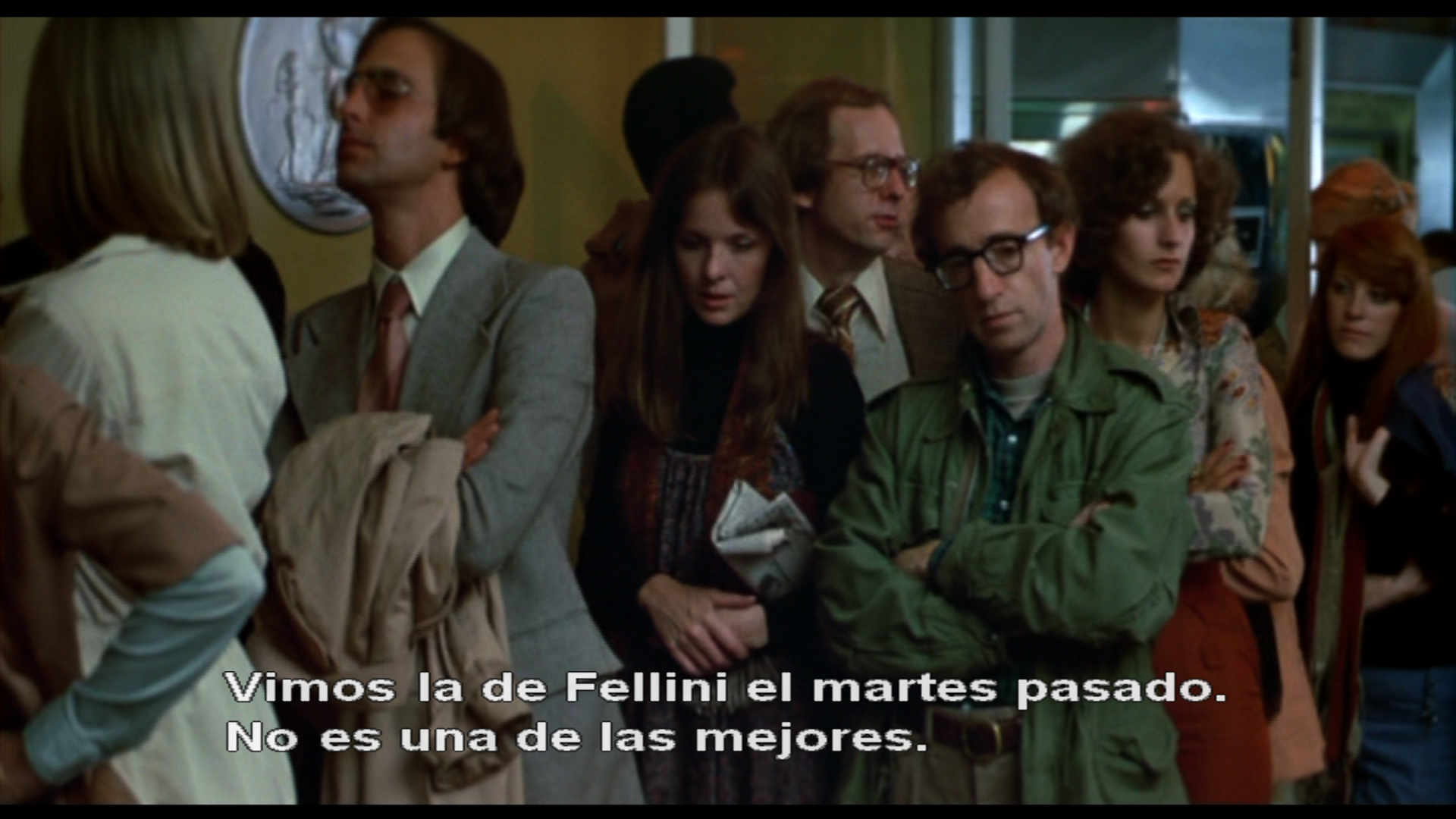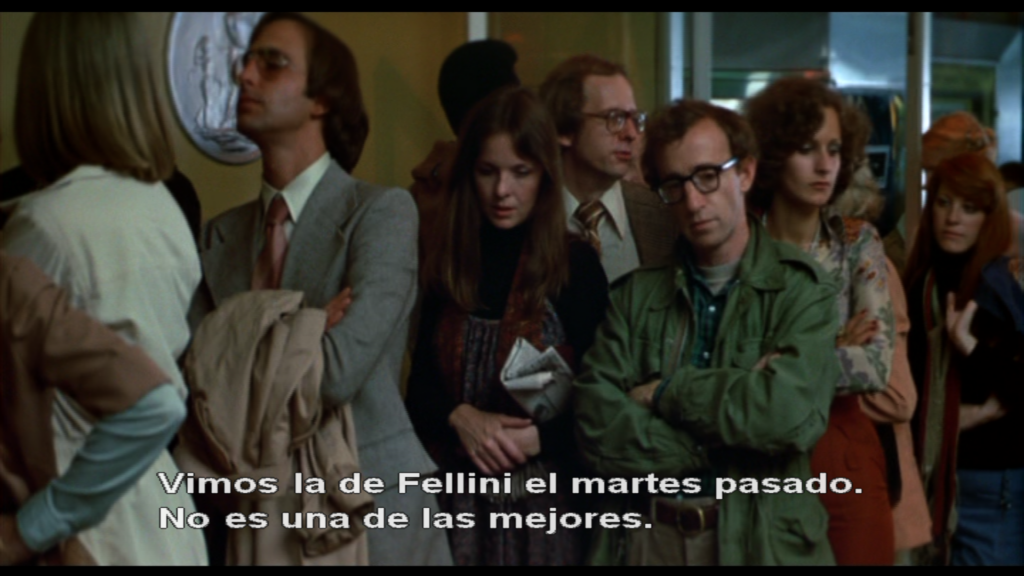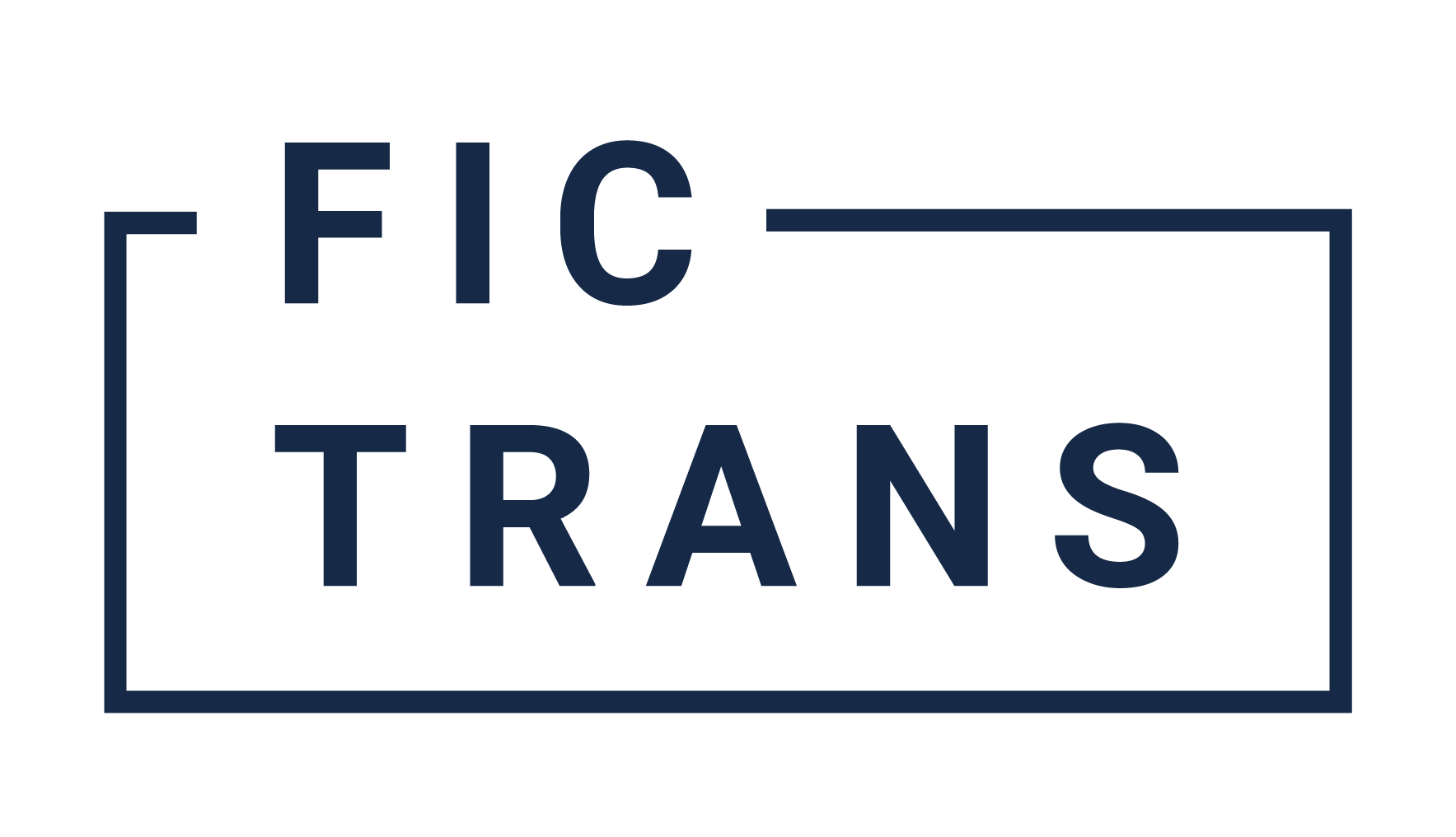Before Metafiction (with an example from Annie Hall)

For David Roas, whose 2023 ASETEL class on metafiction triggered my reading of the Woody Allen movie. Texto sujeto a licencia Creative Commons. BYNCND
Metafiction is the well-known rhetorical or narrative mechanism drawing the reader’s attention to the very materiality of the text (or image) one is reading (or seeing). In order to be able to come to the fore, that is to add itself to the cognitive frame of the reader supposedly immersed in the fiction, it is generally accepted that a strong literary or visual intervention is needed in order to divert the reader from the fictional immersive experience. Metafictionnality, in this way of thinking, does not come naturally. It needs a kind of disruption or at least clear signpost to help the reader access the properly metafictional dimension of the work.
Although widely shared –see the abundant bibliography on metafiction–, this claim has two dramatic flaws.
The first one has to do with the very core of the metafictional hypothesis, namely the fact that the ordinary reader is allegedly not aware of the fact that he or she is reading a fiction, that fictional beings are not real people but just paper beings, that fictional stories are not real life stories, etc. In practice, however, such an assumption is false: readers do not need a metafictional wake-up call to become conscious of the difference between the constructedness of a fiction and the real life situation this fiction tends to emulate. No real reader is really like Don Quixote.
The second problem is related to the nature of the literary device that is involved in the metafictional process. Contrary to what is generally assumed, this device or mechanism does not have to be (over)explicit, like in the case of a fictional character directly addressing the author or the reader (or the spectator). The metafictional mechanism can perfectly remain “implicit”, with no immediate fictional, rhetorical, or diegetic disruption. It is allowed to go unnoticed, which does not mean that it cannot be very effective, since it is always open to metafictional interpretation by active readers.
Although best known for its “explicit” metafictionality, Woody Allen’s Annie Hall (1977) is a good example of this kind of implicit metafiction, for instance in the scene where Alvin (Allen’s persona in the movie) and his girlfriend Anne (Diane Keaton) are seen in a theater lobby, waiting in line to go to a movie. Alvin is increasingly exasperated by the noisy and snooty comments of another moviegoer (the one next in line, “spitting in [his] neck”, so he says). What then follows is a typical explicit metafictional sequence where we have a mix of fictional and nonfictional characters (Alvin, the actual spectators of Annie Hall in the real movie theater, the other moviegoer who proves to be a Columbia professor of media studies, and the then guru of medium theory, Marshall McLuhan), who all enter in a discussion that ends with the “triumph” of Alvin, who manages to have McLuhan criticizing the way in which the Columbia professor has (mis)understood his work. So far, so good, but les us have a look at what happens during the seconds that precede this brief sequence of ultimate and ultra-expliticit metafictionality, with the people still waiting in line (see illustration).

At first sight, there is no trace of metafictionality here yet. Alvin and Annie are quarreling, the Columbia professor is pontificating, all this is perfectly normal in the fictional context (and we are all the more immersed since the characters quarrel about things we are interested in, mainly sex). But if we look more carefully at this image, which faithfully reflects the first part of the scene, where neither the characters in line nor the camera are moving, the possibility of adding a metafictional interpretive layer to something that seems to be nothing more than a gag or an example of verbal slapstick becomes very clear –to the extent that the “hard” or explicit metafictionality that is about to arrive a few seconds later (with Alvin directly addressing the real spectators of the movie and making the circus trick of getting McLuhan as a white rabbit out of his hat) is nothing else than the natural expansion of the first, apparently purely fictional part of this scene. And frankly speaking, the second “explicit” part of the whole scene is far from being as funny and subtle as the first “implicit” one: we do not learn a lot from McLuhan debunking of the Columbia professor, while a careful analysis of the situation that immediately precedes this metafictional outburst provides the reader with a great amount of inspiring ideas on how the director wants us to read the movie, as I will try to argue in the following paragraphs.
Where is then the implicit metafictionality in the first part of the scene (as summarized in the illustration above)? It can be situated, I think, at three levels.
One: costume and lifestyle
The visual representation of the characters delivers a first authorial (and thus metafictional) message to us, the real spectators of this fictional story. Regardless of the gender aspect that I will not develop (but how can one not notice that all men wear glasses, while no woman does?), one easily observes that Alvin, contrary to the two men that “sandwich” him, does not wear a suit and a tie, his outfit being that of what I would like to call an example of guerrilla chic (a kind of yuppie version of the typical Ché Guevara uniform, in these years the inevitable poster image of countless adolescents in New York and elsewhere). This fashion statement is a strong way of addressing the audience and strongly contributes to the building of an ideally intended readership. Besides, Alvin’s girlfriend is the only one of those in line having a magazine in her hands, a lifestyle “detail” that expands on the shaping of the intended viewer, paper (here a metonymic representation of the world of books) being a blatant metaphor of intellectual interest and commitment.
This first set of oppositions offers the real spectator in the theater a clear alternative: either one sympathizes with the symbolic values associated with Alvin’s outfit and his girlfriend’s intellectual lifestyle, or one rejects them as ridiculous and takes sides with the bourgeois characters. The director is delivering here an overt metafictional message, which the rest of the analysis will however have to nuance, for the movie does not only want to foster an empathic reading of the Alvin character.
Two: the dialogues
The second level continues the questions of clothing and lifestyle and tackles what the characters are addressing: movies. The Columbia professor is spitting pseudo-intellectual nonsense on art house cinema (he more precisely expounds typical upper middle brow ideas on Fellini’s La Strada), while Alvin and Annie end up mentioning another Fellini movie (the one they have already seen the week before but which Alvin proposes to see once more for this will allow him to leave the line and to join another line, with no other boring moviegoers). Here as well, the characters are not fictionally talking to each other, they become the puppets of the director who uses them to metafictionnally deliver a new message to the audience: this time clearly a message of self-irony, inviting the real spectators in the theater to realize that Alvin is not so different from the Columbia professor who is about to be ridiculed in his confrontation with McLuhan (the thinker whose work he explains to his students, yet without having understood the essence of it). This second part of the scene may prove very surprising (nobody is expecting to see the real McLuhan appear next to Alvin and the professor), but contentwise it is actually not very funny, nor even very smart: we laugh when we suddenly see the real McLuhan on screen, but what he has to say does not go very deep, and the way in which Alvin takes advantage of McLuhan’s intervention to further humiliate the Columbia professor seems a little easy, as if he himself were not capable of ‘knocking down his enemy. In other words: Woody Allen, the director (not the character!), is intelligent enough to maintain a sharp emphasis on self-mockery: we laugh with the way the Columbia professor is being “corrected”, but the overall impression of the whole scene is, I think, dominantly self-ironical.
Three: mise en scène
Finally, there is also a strong metafictional dimension in the visual organization of the scene as it appears on screen. Here again, there is remarkably clever contrast between the cultural snootiness of Alvin and the extremely classic and conventional composition (mise en scène and framing) of this first part of the scene.
The waiting in line fragment makes various direct and indirect allusions to Fellini –it is not exaggerated, I think, to suggest that the quiet yet dynamic representation of people waiting in line is a transposition of the Italian’s director love of improvising chaos (think for instance of the ending scene of Otto e mezzo)–, yet the resulting image is so perfectly balanced that the result is nothing more than a standardization and normalization of the Italian model. Woody Allen may sincerely admire Federico Fellini and in certain fragments of Annie Hall he certainly manages to emulate the comedia dell’arte tradition, but in this scene it is something completely else that is foregrounded. At the exact center of the image, we find Annie, while next to her we see the only character who is not in line but doing as if he were preparing to run away, Alvin. I don’t think it is possible to make a more adequate while perfectly well constructed character-based composition of the central couple of the movie: Annie and Alvin are right in the middle, each in their own way, either perfectly centered (Annie) or slightly decentered (Alvin).
This spatial composition also discloses a strong temporal dimension. The image is clearly divided in two halves, with the Columbia professor splitting the Annie/Alvin couple: a left half and a right half, and in both cases there is the same transition from light (white clothes) to dark (black clothes). Thus the line becomes more than the mere juxtaposition of people waiting in line, it is a line that can be read from left to right, i.e. a line that constitutes a temporal sequence –and even a temporal sequence whose linear order is nowhere disrupted. The chosen point of view position powerfully reinforces this structure: the camera is frontally directed towards the middle of the group in line, which would have produced a very “horizontal” image, with all characters positioned on the same horizontal line, but close to the character on the left, with a vanishing point tending to be situated not at the center of the image, but on the right side of it. Due to this simple but highly efficient technical decisions, the line has a straight orientation, going from a character close to us on the left side of the screen to a character at a larger distance on the right side of the screen. In that sense it becomes a plausible metafictional metaphor of a movie straightforwardly telling a story with a beginning, a middle, and an end (after all, this is the global structure of the unhappy boy meets girl structure of Annie Hall).
Unlike the second part of this scene, with the somewhat “heavy” metafictional interventions (the direct address of the audience by the character, the confrontation between the professor and McLuhan), the three implicit reading levels, all closely intertwined (first costume and lifestyle, then dialogue, finally mise en scene, perspective and framing), can perfectly be interpreted in a way that is NOT directly metafictional.
For some viewers, this metafictionality can go overlooked and they may find this reading eccentric or far-fetched. It is perfectly possible, in not inevitable to make such a reading for two fundamental reasons.
First: the presence of overt, explicit metafiction in many other sequences of the movie. Annie Hall is often directly metafictional, and this encourages to look for aspects of metafictionality in all sequences, including those where no direct forms of metafictionality seem at work. Metafictional reading is contagious. Second: what the covert or implicit metafictional elements can teach us, seems to be more rewarding then the what is shown by the explicit metafictional aspects, at least in the scene under scrutiny. As already said, we may laugh with McLuhan ridiculing his Columbia colleague, but this joke does not teach us anything on the couple of Alvin and Annie and it also remains silent on the visual language of Annie Hall, while the implicit metafictional reading of the first part of the scene smartly analyzes the love relationship of the protagonists and learns us how to watch the movie without being trapped by the modern melodrama.
Implicit metafictionality is a tricky concept. It is definitely less easy to use than direct metafictionality, which does not depend on the reader or viewer’s agency and creative appropriation of a work’s possibilities. One should accept that it does not possess the immediate transparency and clarity of more conventional ways of tackling metafictionality. Yet provided one takes into account the general necessity to highlight the relevance of this kind of reading for a better understanding of the whole work under scrutiny, as I have tried to in this short analysis by linking the implicit metafictional techniques to general questions of self-representation and cinematographic style, the stakes as well as the promises and benefits of this less studied form of metafictionality are hard to deny.
Author: Jan Baetens (KU-Leuven / FicTrans)
